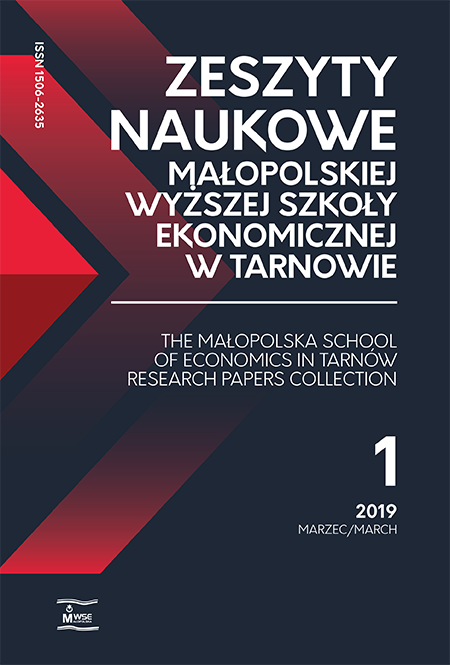Abstract
The subject of the article is the analysis of the impact of common use of multicriterial assessment buildings systems, most of all office buildings on the quality of the work environment in these facilities. The article has been discussed the general principles of certification, including the division into categories and individual criteria; criteria were presented in greater detail, which in the assessment of the work environment quality are based on the LEED method—this is one of the most popular methods for assessing buildings. Due to the fact that Poland remains the indisputable leader of Central and Eastern Europe in terms of the number of certificates obtained for multicriterial assessment of buildings. The estimation trend of these assessment methods was shown on the example of investments implemented in Poland. A detailed analysis of the method and degree of criteria fulfil included in the selected LEED assessment method was also carried out for Polish buildings—their location and time of creation were particularize, as well as the evaluation obtained in the final certification process. The analysis closes the summary in which the answer to the question posed at the beginning was presented. It was a question about the influence and possible magnitude of the multicriterial certification development of office buildings as an indicator of modernity and quality of work environment.
References
BREEAM. (2018). Explore BREEAM: Explore the data behind BREEAM projects. Baza projektów certyfikowanych BREEAM [online, dostęp: 2018-02-18]. Dostępny w Internecie: https://tools.breeam.com/projects/explore/index.jsp.
View in Google Scholar
Business Garden Poznań. (2018). Witryna internetowa kompleksu Business Garden Poznań [online, dostęp: 2018-03-01]. Warszawa: Vastint Poland Sp. z o.o. Dostępny w Internecie: http://www.businessgarden.pl/business-garden-poznan-kompleks-biurowy/.
View in Google Scholar
Business Garden Wrocław. (2018). Witryna internetowa kompleksu Business Garden Wrocław [online, dostęp: 2018-03-01]. Warszawa: Vastint Poland Sp. z o.o. Dostępny w Internecie: http://www.businessgarden.pl/business-garden-wroclaw-kompleks-biurowy/.
View in Google Scholar
JLL. (2017). Rynek biurowy w Polsce 2016. Warszawa: Jones Lang LaSalle.
View in Google Scholar
Kuczera, A. (2017). Certyfikacja zielonych budynków w liczbach. Raport 2017 [online, dostęp: 2018-02-27]. Gliwice: Polskie Stowarzyszenie Budownictwa Ekologicznego. Dostępny w Internecie: https://plgbc.org.pl/wp-content/uploads/2017/04/Certyfikacja-zielonych-budynkow-w-liczbach-2017.pdf.
View in Google Scholar
LEED. (2018a). Leed 2009 for Core and Shell Development. Project checklist [online, dostęp: 2018-03-01]. Dostępny w Internecie: https://www.usgbc.org/resources/core-and-shell-v2009-checklist-xls.
View in Google Scholar
LEED. (2018b). Projects. Baza projektów certyfikowanych LEED [online, dostęp: 2018-02-18]. Dostępny w Internecie: https://www.usgbc.org/projects.
View in Google Scholar
Müller, J. (2015). Komfort vs oszczędność energii w programach certyfikacji budynków [online, dostęp 2018-02-26]. Chłodnictwo & Klimatyzacja, 10. Dostępny w Internecie: http://www.chlodnictwoiklimatyzacja.pl/artykuly/251-wydanie-10-2015/3663-komfort-vs-oszczednosc-energii-w-programach-certyfi-kacji-budynkow.html.
View in Google Scholar
PLGBC. (2018a). Witryna internetowa Polskiego Stowarzyszenia Budownictwa Ekologicznego [online, dostęp: 2018-02-27]. Gliwice: Polskie Stowarzyszenie Budownictwa Ekologicznego. Dostępny w Internecie: https://plgbc.org.pl/.
View in Google Scholar
PLGBC. (2018b). Baza budynków certyfikowanych [online, dostęp: 2018-02-18]. Gliwice: Polskie Stowarzyszenie Budownictwa Ekologicznego. Dostępny w Internecie: https://plgbc.org.pl/baza-budynkow-certyfikowanych/.
View in Google Scholar
Property News.pl. (2018). Witryna internetowa Property News.pl [online, dostęp: 2018-03-01]. Warszawa: PTWP-Online Sp. z o.o. Dostępny w Internecie: http://www.propertynews.pl/.
View in Google Scholar
Taczalska, A. (2016). Architektura współczesnych budynków biurowych w Polsce, ze szczególnym uwzględnieniem Krakowa i Warszawy – aspekt środowiska miejsc pracy na tle tendencji europejskich. Dysertacja doktorska. Kraków: Politechnika Krakowska im. T. Kościuszki. Dostępna w Repozytorium Politechniki Krakowskiej: https://suw.biblos.pk.edu.pl/viewResource&mId=1891425.
View in Google Scholar
USGBC. (2018). Witryna internetowa US Green Building Council [online, dostęp: 2018-02-27]. Washington, DC: US Green Building Council. Dostępny w Internecie: https://new.usgbc.org/.
View in Google Scholar
Złowodzki, M. (1997). Technologiczne i środowiskowe projektowanie architektury biur. Kraków: Wydawnictwo Politechniki Krakowskiej. ISBN 8390387875.
View in Google Scholar
© Copyright by Małopolska School of Economics in Tarnów. The articles are available under the Creative Commons Attribution NonCommercial-NoDerivatives 4.0 International License


